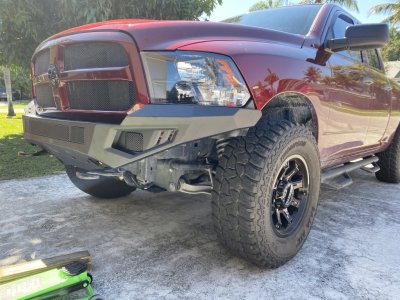ANDREW LARSEN
Junior Member
Does anyone here know there stuff around aligning a 4th gen 1500?
I got a 2011 ram 1500 5.7. I recently installed a 2.5 in leveling kit and had my truck aligned.
The truck now severely pull to the right on the freeway. (bad caster adjustment)
I called the shop and the tech said my adjustments were maxed out all the way and told me to just swap the front tires with each other. Yeah... great customer service.
Anyways. Looking to adjust the caster myself until it drives straight. Anyone ever done this before? Looks likes the lower control arms have two cammed bolts.
I got a 2011 ram 1500 5.7. I recently installed a 2.5 in leveling kit and had my truck aligned.
The truck now severely pull to the right on the freeway. (bad caster adjustment)
I called the shop and the tech said my adjustments were maxed out all the way and told me to just swap the front tires with each other. Yeah... great customer service.
Anyways. Looking to adjust the caster myself until it drives straight. Anyone ever done this before? Looks likes the lower control arms have two cammed bolts.


